Domain name blocking: a brief history and how it works
GlobalBlock, a revolutionary domain name blocking service, has recently launched. It provides unprecedented protection by blocking available domain names that match the brand and preventing purchases by bad actors. It is the next step in the evolution of similar services that have existed in the industry over the last decade and offers a range of innovative features and benefits for brand owners seeking to protect their online intellectual property.
So where did domain blocking begin, and why should brands take notice?
A brief history of domain blocking
For many years, the primary defense against brand imitation and fraud using domain names was to register any domain matching your brand before the bad actors purchased it.
But as modern businesses expand to include more brand and product names and the internet has expanded with hundreds of new extensions after the 2012 new top-level domain program, this solution has proven unviable in many cases.
In 2011, ICM Registry introduced the .xxx domain extension for use by the adult entertainment industry. While the extension has its target market, many brands didn’t want to see their name and trademarks associated with this industry.
To solve this issue, ICM Registry introduced a blocking service through which brands could prevent their trademarks from being registered as a .xxx domain – removing it from the market altogether rather than registering it.
This service was later expanded into the highly popular AdultBlock service, adding the other adult-themed extensions .porn, .adult and .sex.
Since then, other blocking products have followed suit, protecting trademarks in various extensions covering around a third of the market.
One of the most successful and widely recognized is the Domain Name Protected Marks List (DPML) service, which blocks domains across approximately 300 extensions. DPML is managed by Identity Digital (formerly Donuts) and includes domain extensions such as, .fail, .fyi, .info, and .group.
Other smaller blocking services have launched, covering single or small groups of extensions, but have failed to reach broad market adoption with brand owners.
How domain blocking works
The major difference between registering a domain and blocking it is whilst the domain is “owned” by the brand owner, it can’t be used for websites, emails or other purposes. In effect, blocking removes the ability of others to register the domain.
Particularly when it is a domain you have no intention of using, this can be useful to avoid the hassle of maintaining the registration, renewing it each year, and paying ongoing registration fees or running the risk of accidentally losing it.
As a result, blocking provides peace of mind against domain fraud and brand impersonation while reducing the complexity and costs of domain management and litigation and creating operational efficiencies.
A new approach to blocking
A primary reason many blocking services haven’t gained widespread adoption is their limited reach.
When brand owners and businesses cry out for simplicity, the last thing they want is to purchase coverage piecemeal from dozens of individual suppliers.
With a focus on innovating in this space and finding a better solution to online brand protection, the team at GoDaddy Registry began talking with and listening to brand owners some time ago to better understand their challenges.
It became clear that improving the experience of those protecting their brands online would require a collaborative effort from the domain name industry.
The GoDaddy Registry team took the conversation to the community, steadily gathering support among registry operators and service providers willing to try a new approach.
Through this, the Brand Safety Alliance (BSA) evolved, an organization that can unite and unify registries around a shared vision to service the needs of brand owners and create a safer internet. The BSA is dedicated to developing products and services that allow brand owners to protect their online identity.
The first product from the BSA is GlobalBlock, a revolutionary domain blocking service which offers protection across more than 550 domain extensions in one transaction. This is the first time a blocking service has offered this breadth of protection.
In addition, this approach creates greater simplicity and ease for brand owners and IP professionals, precisely what the sector has been asking for.
The BSA is developing a roadmap of new product offerings for the next five to ten years. This roadmap will continue to focus on making the internet a safer place for brands and consumers.
Domain blocking may not be a silver bullet to online brand protection, but as the world of online business becomes more complex and the risks increase, blocking can provide a streamlined way to achieve some peace of mind and simplify domain management in the process.








